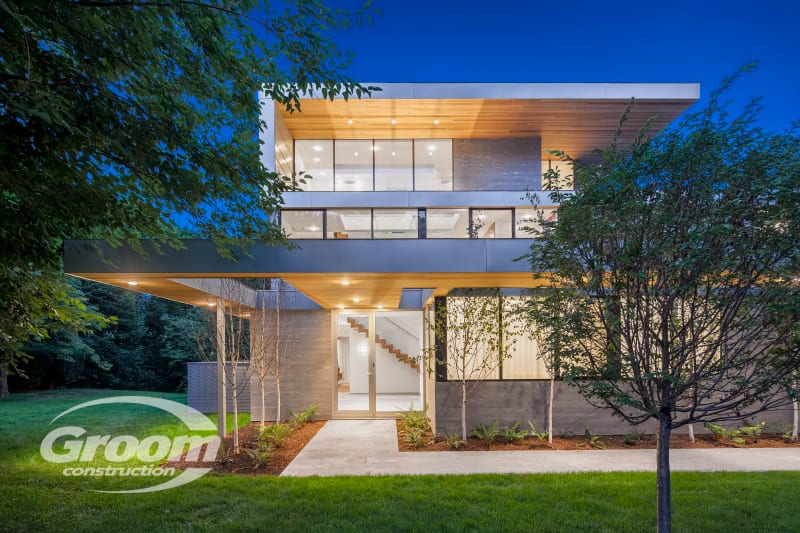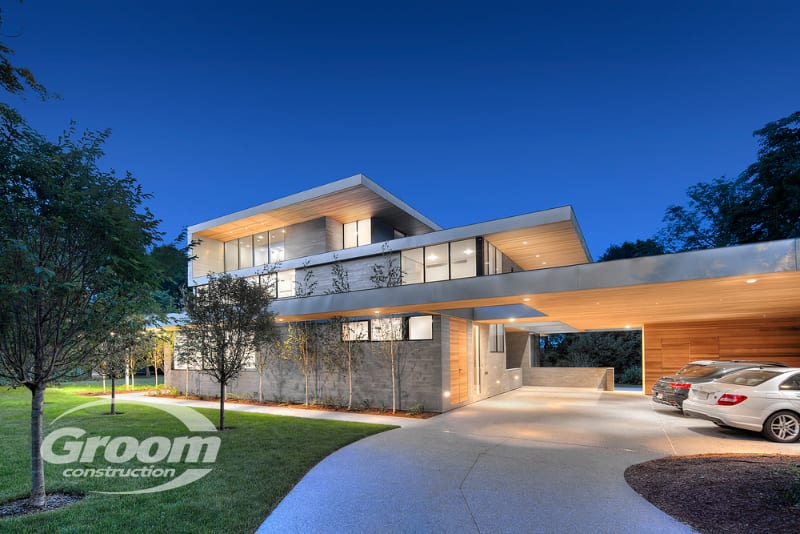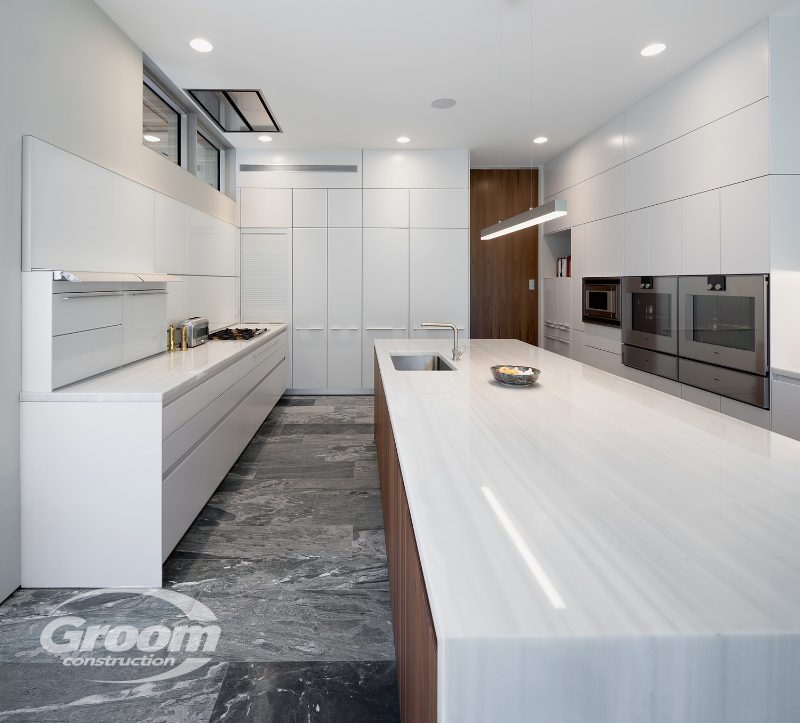The Cost to Build a Contemporary Home: Why It’s Higher than A Traditional One
January 1, 2020
Sponsored Content
Text by Kaitlin Madden Photography by Horne Visual Media

If you’re planning to build a modern home, you might have one very important question: how much it will cost. The cost to build a contemporary home varies depending on the location of your home, the cost of labor where you live, the quality of the materials you choose, and your desired square footage. But one thing is certain: building a contemporary home is more expensive than building a traditional one.
The cost difference is for good reason, however. “Essentially, contemporary homes just require a level of precision that’s not required in more traditional spaces,” says Tim Dougherty, a project manager for Groom Construction, a Salem, Mass.-based construction company that specializes in complex builds like modern homes.
Before you let sticker shock dissuade you from building your modern dream home, Dougherty offers up the biggest reasons why it pays to spend more on contemporary design.
Structural challenges must be solved with style
The sleek look of modern homes means every surface needs to serve a purpose. This often results in fewer walls than might be found in a traditional home. “Fewer walls make contemporary homes more structurally challenging to build,” says Dougherty. “Having few walls and more expansive open spaces requires additional structural beams to hold up the floor above. When you have walls that are mostly glass, special steel beam construction has to be erected to keep the house from racking.”
Specialty contractors are a requisite
A contemporary home typically requires specialty contractors who are trained to execute the precise details that ensure the home is just-so. For example, says Dougherty, “All the metal edging needs to be set with a laser in order to make sure all of the reveals are correct. A number of different metal edge pieces are used, and most drywall hangers are not set up to do that type of work with the precision that is required.”
Windows are usually custom
The larger windows typical in contemporary homes are costly and can’t be ordered in bulk.
“The high-end custom windows that we used for a house we did in Belmont, for example, came from Germany and are far more expensive than standard windows,” says Dougherty. “It is about a sixteen-week lead time after the order is placed, and it can take anywhere from four to eight weeks just to put the order together because everything must be so precise. The tolerances are very tight on these windows. They need to be worked out with the framing and finishes to get the proper reveals.”
Construction is meticulous
The sleek lines of contemporary design require meticulous precision, which is extremely labor intensive. For example, the lumber used for framing a house typically comes with natural bumps and imperfections, character that works just fine in a traditional home but isn’t compatible with the precision and exposed lines of modern architecture. To prep it, each board used in the framing has to be shaved flat, says Dougherty.
Contemporary design also eliminates the leeway provided by details like baseboards, molding, and trim. “The floor had to be perfect since everything is exposed,” says Dougherty. “In a traditional home, trim and baseboards can cover up any imperfections—there is no room for any flaw since it’s all exposed in a modern home.”
Overall, says Dougherty, it’s important to leave plenty of room in both your budget and your timeline for the precision required in contemporary construction. “On average, it takes at least twenty-five percent more time to construct a contemporary house, assuming the homeowner and design team have all of their decisions made on time,” he says. For true contemporary devotees, however, the exacting details will be well worth the wait.

Builder: Groom Construction, Salem, Mass., 781-592-3135
Architect: Maryann Thompson Architects, Watertown, Mass., 617-744-5187
Share
![NEH-Logo_Black[1] NEH-Logo_Black[1]](https://b2915716.smushcdn.com/2915716/wp-content/uploads/2022/08/NEH-Logo_Black1-300x162.jpg?lossy=1&strip=1&webp=1)



















You must be logged in to post a comment.